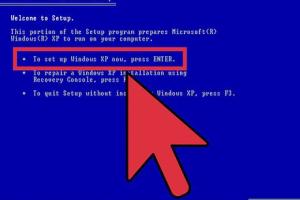Ultimate Guide to Installing Windows XP: A Step-by-Step Tutorial

-
Quick Links:
- 1. Introduction
- 2. Pre-Installation Requirements
- 3. Creating Installation Media
- 4. BIOS Setup
- 5. Installation Steps
- 6. Post-Installation Configuration
- 7. Troubleshooting Installation Issues
- 8. Case Studies
- 9. Expert Insights
- 10. Conclusion
- 11. FAQs
1. Introduction
Windows XP, released by Microsoft in 2001, remains a beloved operating system for many users, particularly in legacy systems and niche applications. Despite its age, it offers a user-friendly interface and robust performance for basic tasks. This guide will provide a comprehensive step-by-step tutorial on how to install Windows XP, ensuring that even those with minimal technical knowledge can follow along.
2. Pre-Installation Requirements
Before starting the installation process, ensure you have the following:
- Windows XP installation CD or an ISO file.
- A compatible PC (check hardware requirements).
- At least 1 GB of RAM (2 GB recommended).
- 1.5 GB of available hard disk space.
- A bootable USB drive (if using an ISO file).
- Backup of important data.
3. Creating Installation Media
If you have an ISO file, you will need to create a bootable USB drive. Follow these steps:
- Download a tool like Rufus or UNetbootin.
- Insert your USB drive and open the tool.
- Select the ISO file you downloaded.
- Choose the USB drive from the device list.
- Click on “Start” to create the bootable USB drive.
4. BIOS Setup
To boot from the installation media, you may need to adjust your BIOS settings. Here’s how:
- Restart your computer.
- Press the required key (usually F2, DEL, or ESC) to enter BIOS.
- Navigate to the “Boot” tab.
- Set the boot order to prioritize USB or CD/DVD drive.
- Save changes and exit BIOS.
5. Installation Steps
Follow these steps to install Windows XP:
- Insert your installation media and boot the computer.
- Press any key when prompted to boot from CD/DVD or USB.
- When the Windows Setup screen appears, press Enter.
- Accept the license agreement by pressing F8.
- Select the partition where you want to install Windows XP and press Enter.
- Choose “Format the partition using the NTFS file system” and press Enter.
- Wait for the installation to copy files and install Windows XP.
- Follow the on-screen instructions to complete the setup.
6. Post-Installation Configuration
After installation, you will need to configure Windows XP:
- Set up user accounts.
- Install drivers for hardware components.
- Install essential software and updates.
- Configure system settings according to your needs.
7. Troubleshooting Installation Issues
If you encounter problems during installation, consider the following solutions:
- Ensure your hardware meets the minimum requirements.
- Check the integrity of the installation media.
- Verify BIOS settings are correctly configured.
- Seek help from online forums or technical support.
8. Case Studies
Numerous users have successfully installed Windows XP for various purposes. For instance, a small business owner utilized Windows XP for point-of-sale systems, enhancing their workflow despite its legacy status. Another case involved a tech enthusiast who revived an old laptop, providing it with a functional operating system for basic tasks and internet browsing.
9. Expert Insights
Experts recommend that users familiarize themselves with the potential security risks associated with Windows XP, as it no longer receives official support from Microsoft. Updating software regularly and using antivirus solutions can mitigate some of these risks.
10. Conclusion
Installing Windows XP can be a rewarding experience, especially for those looking to utilize older hardware or seek a nostalgic interface. By following the steps outlined in this guide, users can successfully install and configure Windows XP, ensuring a smooth operating experience.
11. FAQs
1. Is Windows XP still safe to use?
While some users still run Windows XP, it is no longer supported by Microsoft, making it vulnerable to security threats. Use with caution.
2. Can I install Windows XP on modern hardware?
Yes, but you may face compatibility issues with drivers. Research your hardware before installation.
3. What should I do if the installation fails?
Check your installation media, BIOS settings, and ensure your hardware meets the requirements.
4. How can I back up my data before installation?
Use an external hard drive or cloud storage to back up your important files before proceeding.
5. Can I dual boot Windows XP with another OS?
Yes, you can set up a dual-boot system, but make sure to install Windows XP first, followed by the newer OS.
6. How can I update Windows XP?
You can install updates manually via the Microsoft Update website, but be aware that support is limited.
7. What if I don’t have the installation CD?
You can create a bootable USB drive from an ISO file if you have access to one.
8. How long does the installation process take?
Typically, the installation can take 30 minutes to an hour, depending on your hardware.
9. Can I install Windows XP on a virtual machine?
Yes, using virtualization software like VirtualBox or VMware allows you to run Windows XP safely on modern systems.
10. What are the best uses for Windows XP today?
Windows XP can be used for legacy applications, lightweight systems, and educational purposes.